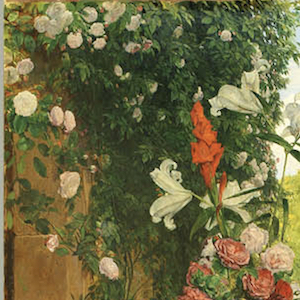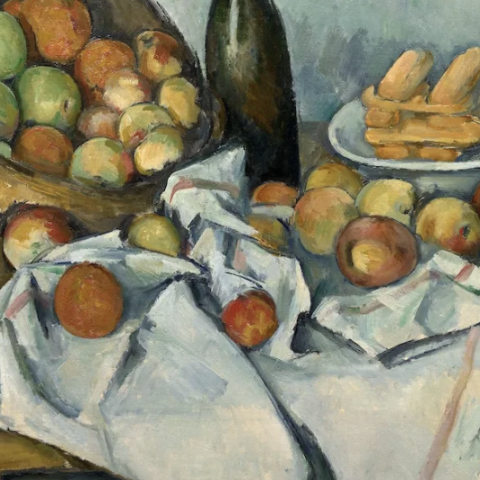Drawing With Scissors
By Rebecca Blakeston
To create is to live. If you work within some kind of creative pursuit you may well understand this. To NOT create is to wither, to fade, to slowly disappear. It is more than an occupation. Like being a sportsperson, it’s a ‘must’. It’s to understand that this passion is rooted not in choices but in compulsions. It can’t be resisted. Regardless of ‘how’ we will always find ways to ‘do’; it drives us because it is an innate reflex. But what if you can’t follow this urge anymore? Whether you haven’t had the time, the inspiration or the resources, it’s like losing yourself. How do you find a different way to fulfil that creative addiction? Find out more here in Drawing With Scissors
Image Henri Matisse Nu bleu 11 1952 Gouache Decoupee 116,2 x 88,8cm with thanks to The Arts Council Collection symbol 211/f
When you have this drive, you want to keep it in your life forever. This raises a few questions. What happens when you are met with an obstacle to your need to create? Does one pursue their passion in a way that strays from the norm? And anyway, what does it mean to be creative when you can’t be penned in by tradition?

Krzysztof Maksimiuk, 2020
Henri Matisse, the revolutionary Fauvist painter, highly regarded for his incomparable use of colour, was diagnosed with abdominal cancer in 1941 at the age of 71. Wheelchair-bound and largely confined to his bed in his final years, he refused to halt his career and instead continued to innovate through collage, using coloured paper and glue instead of his well-used medium of paints and a brush he could no longer hold.
Bed-bound but still filled with the inherent need to make, Matisse began working on what would become a prolific body of collage/decoupage work.
‘Paper cutting allows me to draw with colours. For me, it’s a simplification: instead of drawing the contour and colouring the inside – one modifying the other – I draw directly into the colour.’
Matisse.
He had spent his career renowned as a master of colour; painting with such vibrancy he was even advised to wear dark glasses. Incapable of resigning to illness, Matisse found a new way to explore his life’s work.
Matisse: The Cut-Outs, Tate, 2015
Cutting and tearing pieces of paper, painted with gouache by assistants and then glued into place under his precise direction, replaced his mastery of the paintbrush and Matisse’s inner world of colour could continue to become a reality. For decades after Matisse’s passing, artists have continued to show that the drive to create is not confined to or defined by the medium of brush and paint.
If you have feet, you can run. If you can use your hands, you can make with them. These are generally accepted truths. But what about in the absence of these things? There is proof in the decades of work produced by numerous creatives that great work doesn’t need to be confined to a single traditional outlet. There is never just one way.
Matisse, after all, started out with paint and brushes but finished with paper, scissors and glue. This evolution was the result of illness in his case but, as an artist, paints may well not feel like your chosen medium to begin with.
There are numerous ways of expressing artistic feelings that stray from drawing and painting alone. The body itself, for example, can be used to push the limits of what art can be. Whether it’s the ‘vomit art’ of Millie Brown, creating images from the expulsion of what was once inside her, or Andres Serrano’s infamous ‘Blood and Semen’ pieces; a vision can be met through means deemed not only non-conventional but, for many, repulsive. The abject doesn’t deter such artists and is maybe even vital to the power of their work.
Marina Spetlova SS11, Millie Brown Official, 2013
To make reality a concept with one’s very literal internal self proves that art is something built in that has to find its way out; sometimes in the most physical sense.
Pushing the relationship between the body and art can also be found in the work of Rachel Rossin. Having recently minted her own DNA on the blockchain as an NFT, Rossin has made available her most personal information: her genetic makeup.
I’m stating that I think we’re not fully prepared for the way our bodies and technology will intersect.
Rachel Rossin
This piece, which is listed on OpenSea, is not intended to actually sell according to Rossin and instead exists as a demonstration of wetware (organic tissue) and hardware coming together. This exploration of merging the human body with the digital world through art gives a new lens for viewing the body and its creative function.
Then there’s the depiction of humanity as a whole, rather than a specific persona, at the centre of the work of Spencer Tunick; humanity in a very literal sense, and from an external perspective.
His large-scale nude photographs featuring thousands of participants are surreal and joyous embraces of the human form and spirit with his largest installation in the UK to date being ‘Sea of Hull’.
This work, consisting of volunteers painted in different shades of blue and positioned in various locations around the city, created ocean-like waves lining the streets. The coloured body literally replaced the paint and brush.
And decades before Tunick’s sea of blue-painted bodies, they were seen in Yves Klein’s Anthropometries.
Yves Klein Les Anthropométries Live, Mondo Cane, 1962
In these pieces of performance art, naked women would paint themselves in ‘International Klein Blue’ paint and leave imprints of their bodies across the paper. Following this process, Klein would also go on to use the imprints of models in his ‘fire paintings’. Klein described these fire paintings as encapsulating the ‘sweetness and torture that lies at the heart and origin of our civilisation’.
Sprayed with water, models would press against cardboard before the figures left behind were scorched with an industrial blowtorch. The results: ghostly negative images burnt into the works.
When depicting the nature of humanity, some of the most uplifting and intriguing results can come from using said humans as the medium itself.
There is also the question of what happens when an artist is incapable of ‘traditional’ work not through illness but because of their technical skills?
I’m not very good at doing technical things with my hands. I couldn’t make something out of wood, or change a lock. I’m not very logical. But I can think.
Jeremy Deller
Turner Prize winner Jeremy Deller (an artist who, in his own words, ‘can’t draw’) has made a prolific career through installations, public events and the written word. Too embarrassed to tell his parents that he was pursuing an art degree due to his abilities, Deller told his parents he was studying teaching and so his parents continued to believe, even in his art world success, that he is a qualified teacher. Deller’s posters in particular are representative of a very British form of rebellion and celebration. One print reads:
This Artwork is not to be resold at auction or online, if you do you will be Cursed and die Horribly
Jeremy Deller at the Turner Prize Retrospective 1984–2006, Tate, 2009
Deller creates work for and about normal people- not the ‘art world’. Maybe this attitude is a reaction to the exclusionary attitudes that tried to prevent him from making art in the first place. Here, his words are his tools.
There’s also the opportunity for creating a new medium by taking something, food for example, out of its normal context. This can be seen in the experimental and amusing work of Vik Muniz who is perhaps best known for his recreations of iconic images using various unusual materials including spaghetti, peanut butter and rubbish taken from landfill sites to name a few. He describes his pieces as ‘photographic delusions’.

Vik Muniz (b. 1961), Woman of Algiers, after Pablo Picasso (Surfaces), 2022
Muniz has a solo exhibition entitled FOTOCUBISMO opening this April at Ben Brown Fine Arts London featuring works from his latest series Surfaces.
The list of creatives who stray from the limitations of the paintbrush is vast, full of intrigue, and inspiring. Visions can be made reality with means far removed from ‘classical art’ practices. Drawing, sculpture and painting are only a small facet of a world of possibility.
There is also an unlikely connection to Matisse’s story that comes in the form of Tracey Emin. Following a diagnosis of bladder cancer, Emin would go on to have life-changing surgery. Emin, who has depicted the turbulence of her life for decades, coped with the horror of an illness, which has left her disabled, by documenting it.
Her deeply vulnerable self-portraits from this period, turning to the medium of photography, demonstrate her compulsion towards visuals. It is, to her, the natural reaction to life’s events. That innate reflex of creativity.
During her recovery, she was rendered incapable of creating her usual autobiographical paintings. Emin said of eventually being able to paint again:
‘I realised I was alive’.
This felt reminiscent of the all-encompassing experience of art that Matisse was compelled by:
From the moment I held the box of colours in my hands, I knew this was my life. I threw myself into it like a beast that plunges towards the thing it loves.
Henri Matisse
An exhibition of Matisse prints entitled Matisse: Drawing With Scissors is Touring the UK this year and will provide a rare opportunity to enjoy the body of collage work produced in the final four years of his life.
Matisse’s show is with Hayward Gallery Touring with a run at Guildford House Gallery, the 35 pieces are set to visit Beverly Art Gallery and The Brampton Museum. They will also be available to other galleries from September 2023. This inspiring series of works show the persistence of the creative instinct and the possibilities of art made in the abandonment of tradition. Check details here
Personal, bizarre, shameful, exquisite, individual? What a fist full of emotions being creative is. A beautiful gift that is built in yet also a burden. A mental strain and, in the cases of Emin or Matisse, physical too. But it doesn’t deter this need and, oftentimes, strengthens it.
If you enjoyed reading Drawing With Scissors then why not try Painted, Women
. Cent London Be Inspired; Get Involved



